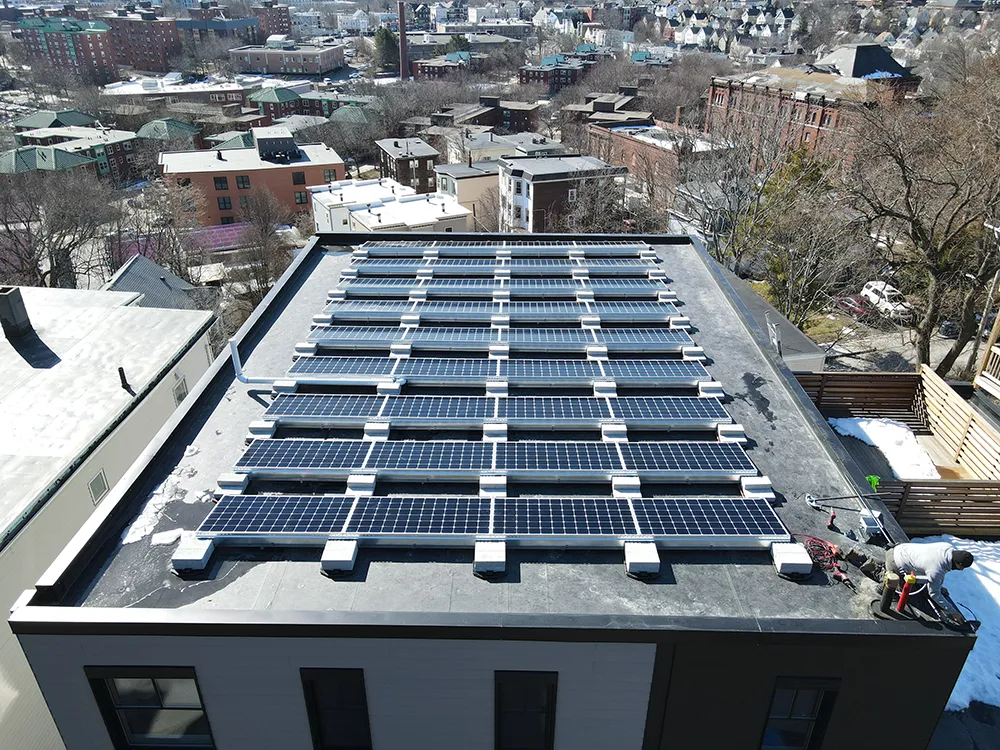Pandemic Pushes Real Estate to Rethink Its Practices
Sudden Shifts in Many Sectors Spurs Focus on Innovation
This article originally appeared in Banker & Tradesman, and can be found here in its original form.
August 30, 2021 | by Zeina Talje
Real estate lags other industries when it comes to innovation. Yet a real need to adapt to new demands following the pandemic, along with a significant influx of capital into real estate from investors looking to hedge against inflation, is accelerating change.
As office tenants reduce their footprints, large-scale real estate funds are shifting capital into life science. At the same time, multifamily developers are rethinking their units as demand for larger apartments with a home office increases. And the surge in building commodity prices coupled with a labor shortage is straining multifamily profit margins. Yet Boston’s residential market is still underserved, so developers are sharpening their vision of what renters’ and buyers’ needs will be moving forward.

In Mission Hill, a new condominium development offers modern designs that reflect the latest strategies to address climate change, like pre-installed solar panels.
As carbon emissions declined during COVID, a glimpse of a carbon-neutral future came to life. This carbon neutral future depends heavily on steep energy reductions in usage as well as the integration of renewables. The last 20 years have seen significant investment in renewables which has driven the cost of these systems down to levels that have made it far more financially viable. Tax credits, as well as the array of financing options for integrating renewables into real estate, have helped their growth but there remains a lot of work ahead to be done.
These types of investments in energy are timely given the entry of a young generation of homeowners and office workers into the workforce whom despite a significant student debt burden are holding well-paying jobs, enjoying low interest rates and expect more sustainable features in their homes and workplaces.
Changing Demands in Office Sector
Previously agreed-upon notions around office uses have also been blurred. A debate is raging between CEOs and employees who aren’t quite willing to give up the flexibility and autonomy remote work offered during the pandemic. Some startups and smaller companies who don’t typically commit to long-term leases gave up their offices in the last 18 months and adapted fully to remote work models. This has meant reduced overhead and hiring team members from other parts of the country, which has allowed for a larger applicant pool. Large employers like Amazon are even facing a major backlash from employees, with some leaving as ‘return to the office’ mandates are rolled out.
While it was unprecedented to see Boston’s financial district empty out during COVID, the use of office buildings has been undergoing a gradual change for the last two decades as office lobbies got updates to feel more like hotel lobbies. Leases in high-rise, class A buildings can be expensive, accounting for up to a third of a company’s overhead. This has led the CEOs and CFOs of large financial, legal and other firms to scrutinize leasing costs and floor plans. Architects have been studying office usage patterns for different businesses to offer the most efficient solutions.
The pandemic highlighted a new possibility of long-term remote work that would have been unheard of previously in some sectors as well as forced a rethinking of the shared office layout as schedules get staggered. It seems natural that the class B office market would shrink with the possibility of 1970 and ’80s highrises from the Reagan-era building boom being repurposed for today’s new user.
These types of investments in energy are timely given the entry of a young generation of homeowners and office workers who expect more sustainable features in their homes and workplaces.
Proptech, Construction Ideas Turn Heads
Venture capital isn’t just flooding into life science firms today. It’s also flowing into proptech companies, especially those focused on the operations side of real estate. Real estate owners and developers are also buying in and making investments of their own in these technologies especially with the need to centralize information as work shifts to remote models.
One of these startups, Cambridge-based coUrbanize, was recently recognized for its impact on the national stage earning a spot on Fast Company’s List of World Changing Ideas. The coUrbanize platform connects planners and developers with residents in meaningful dialogue through its online service rather than only during evening meetings when often the angriest voices drown out the ability to find effective solutions.
On the construction and design side, the idea of a building virtual twin that models all systems during design and anticipates building energy usage is all the rage. In fact, we are a bit behind figuring out how to integrate every piece of building equipment that comes with a WiFi connection and a programmable app into one interface for a homeowner or office user.
In terms of construction, the surge in commodity pricing and labor shortage has heightened the investments and interest in manufactured construction which ranges from panelized systems, to modular boxes and various building kits. While it’s not clear if there are actual material or first cost savings in manufactured construction relative to traditional methods, it certainly promises shorter schedules, less material waste and greater quality control.
All these investments make for a transformational and exciting future ahead for real estate.

